A mushroom terrine can be a fun way to use mushrooms if you want something new to make. They can be served cold with mayonnaise and pickles like charcuterie, or warmed up and eaten like a piece of meat.
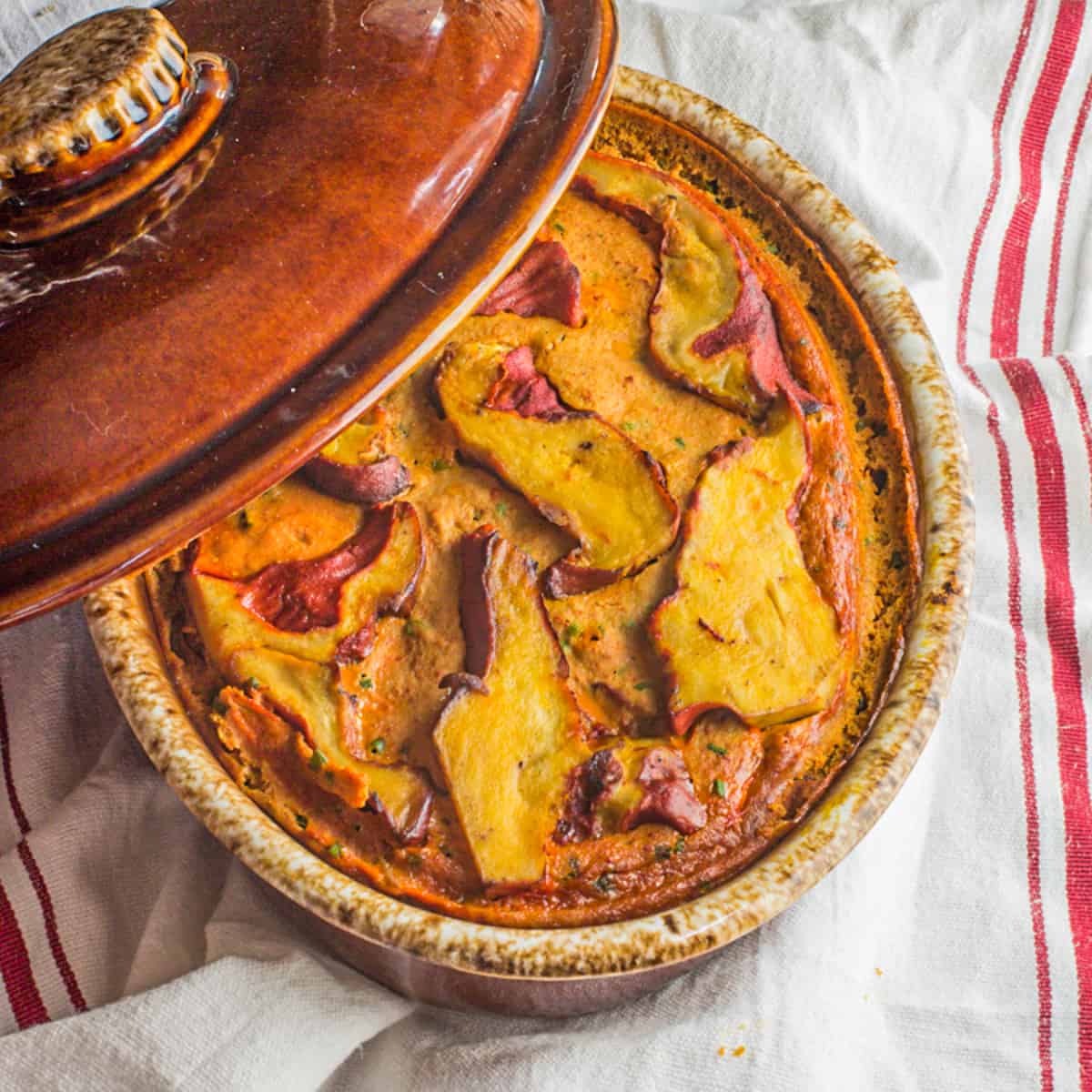
Don’t be scared of the word terrine, just imagine a sexy meatloaf, since that’s really all it is. I’ve seen plenty of recipes for terrines of mushrooms, and have had a few good ones, but they can be a bit of a novelty. To make a terrine that’s as beautiful as it is delicious can be a trick, even for hardened kitchen staff.
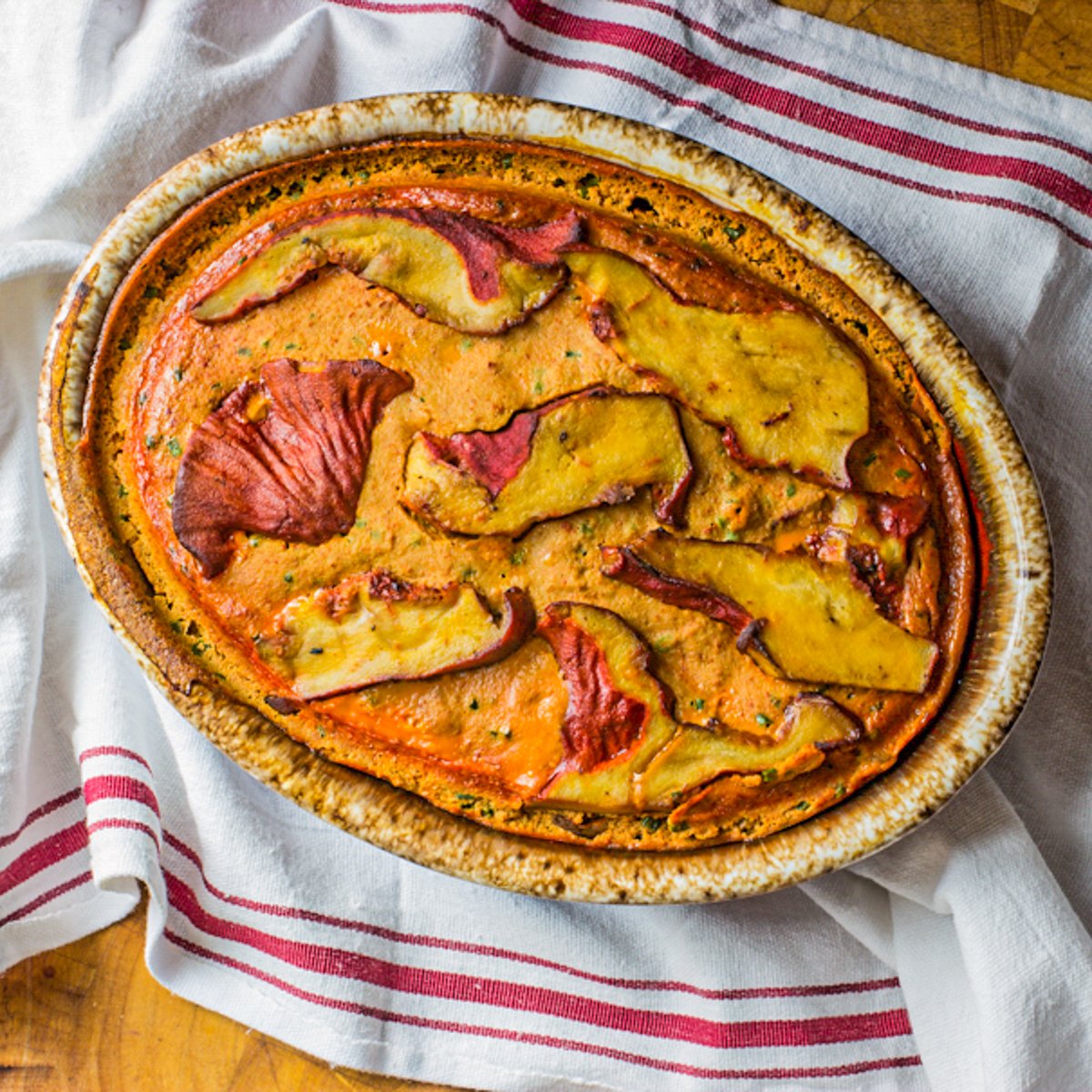
Most terrines, if they’re not made with meat, are going to be bound with egg, or gelatin. This terrine uses egg, but also ground whole lobster mushrooms or trim to create the binding layer-the perfect use for some that might have been dropped or broken, or otherwise need to be cut down for cleaning due to their size.
It took me two tries to get it right, but the end result is very good. The first time I used pure ground mushrooms and onion in the binding layer and the flavor was nice, but slightly bitter, which can happen using mushrooms en masse like this, and I experienced the same thing cooking large amounts of black trumpet mushrooms into duxelles a while back.
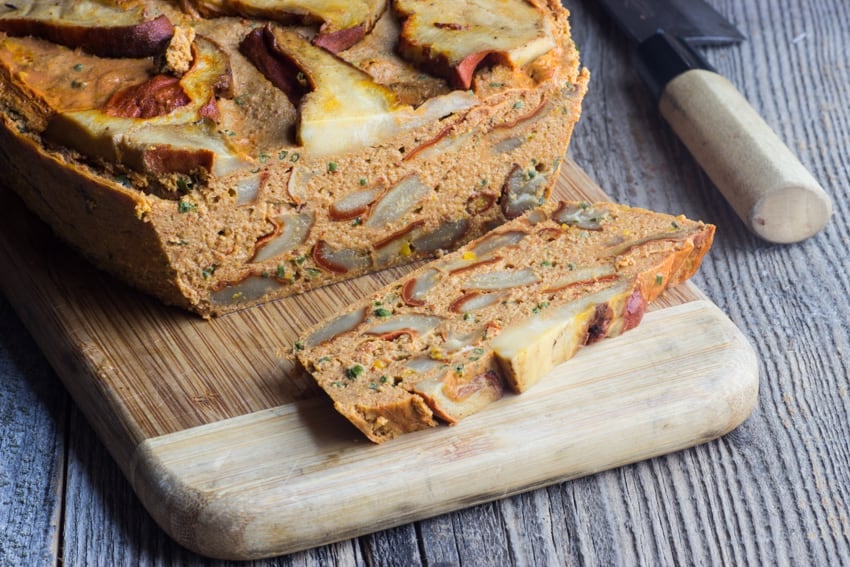
To counteract the bitterness, I added ground mirepoix (carrot-onion-celery) to the binding layer to round out the flavor of the lobster mushroom. BINGO. After cooking the bejesus out of the vegetables to make sure they were tender, I slapped some eggs into the mix, sautéed some slices of lobster mushroom for layering in the terrine, adjusted the flavor with some fresh herbs and called it a day.
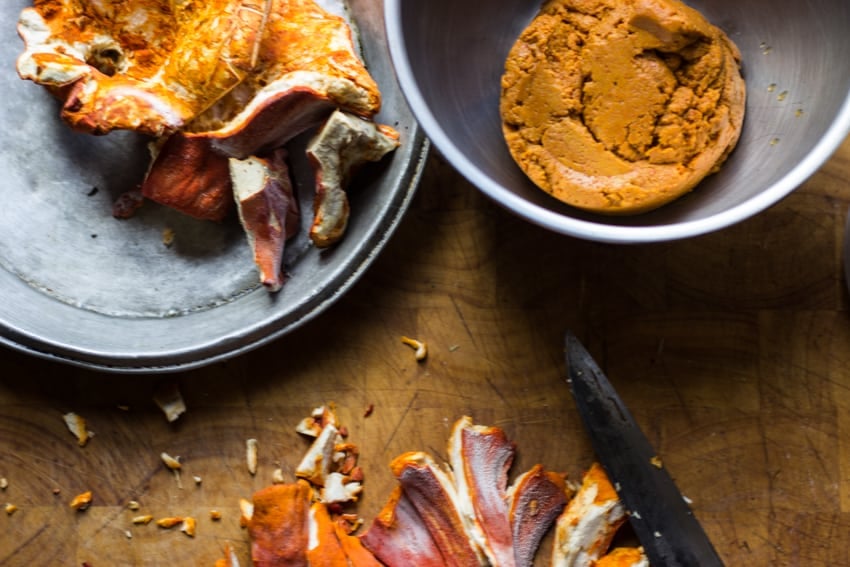
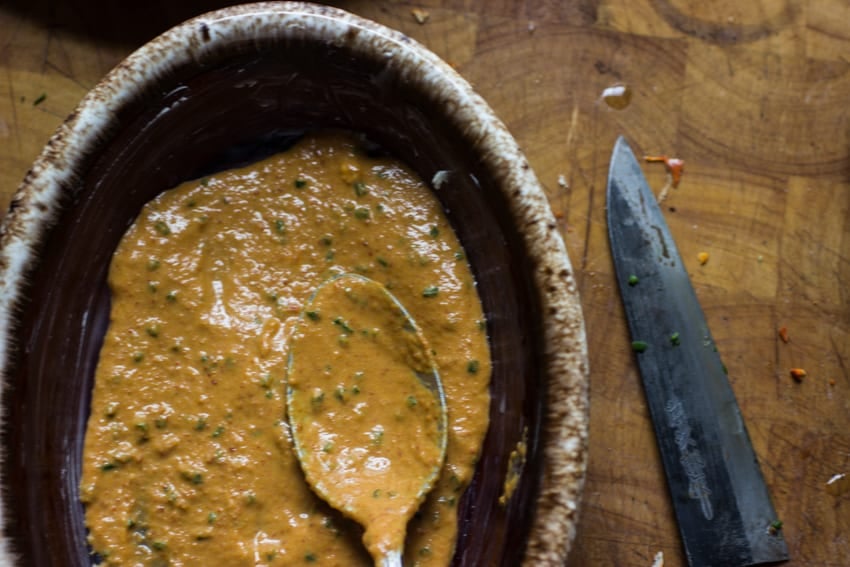
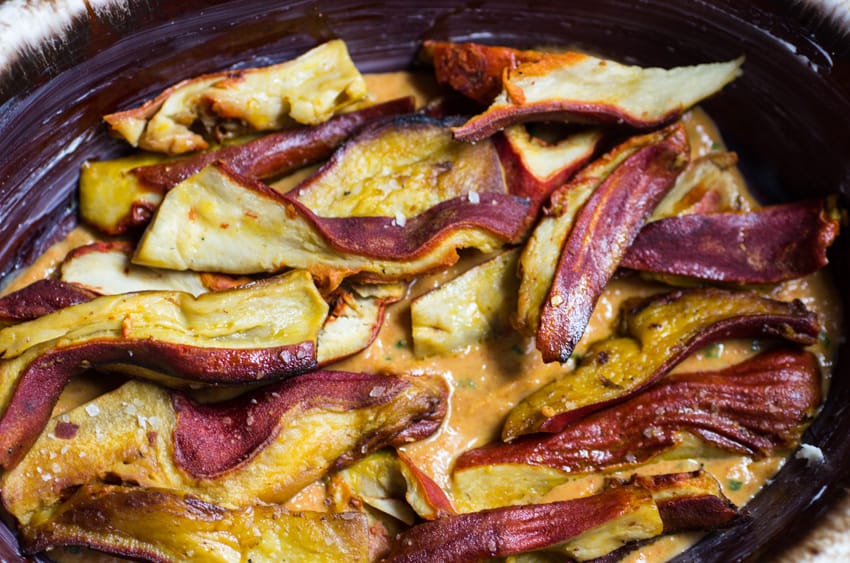
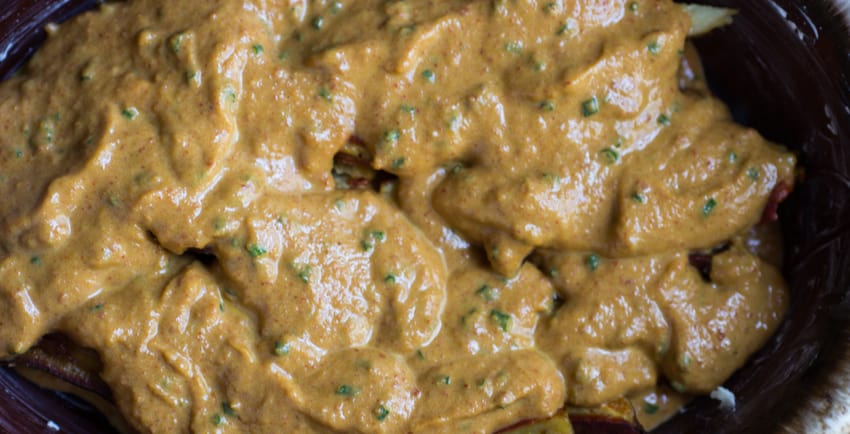
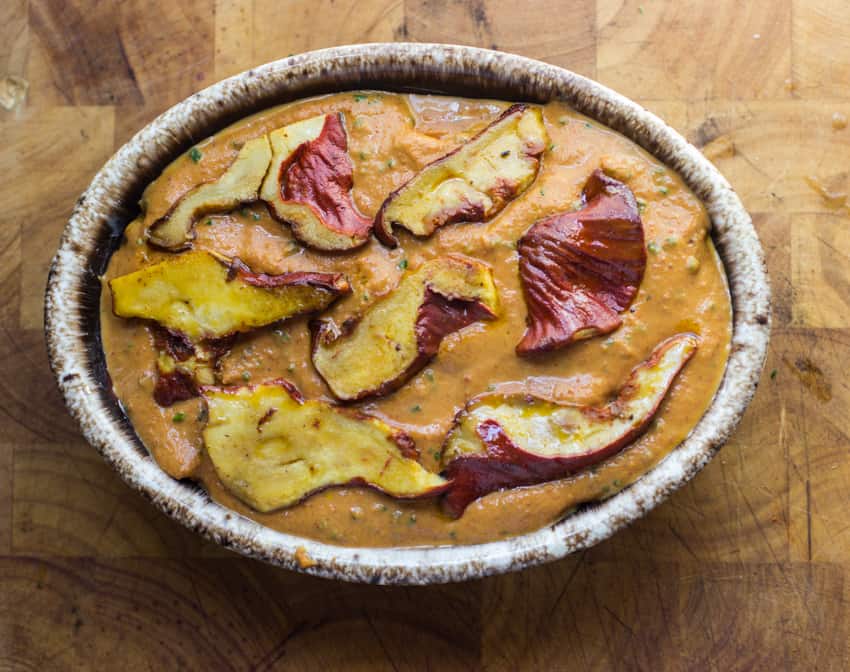
If you’re wondering how you might use a giant loaf mushrooms, I’ll give you a couple ideas. The possibilities for something like this are really fun, and you don’t have to have a fancy dinner party to enjoy it. When I was testing the first recipe I put a slice on a grilled cheese sandwich.
How to serve
- Slices of terrine would be great on a sandwich.
- The terrine can be re-heated gently and eaten with a salad.
- Instead of some sautéed shrooms with your steak, have a slice of warm or room temp terrine.
- Best of all is serving the terrine whole as a stunning appetizer for a dinner along with cheese, crackers, mustard and pickles. You could leave it in it’s mold if It’s a pretty one, letting guests cut out slices, or just remove it, then slice ½ of the terrine, fanning out the slices in front of the whole un-cut terrine.
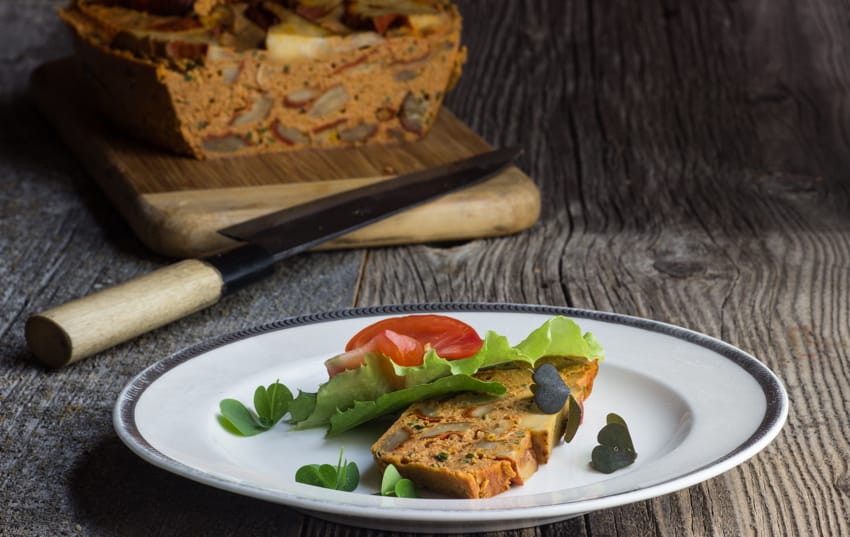
Mushroom Terrine
Equipment
- 1 Loaf pan or bread tin
Ingredients
- 2.5 lbs fresh lobster mushrooms cleaned and trimmed
- 2 teaspoons chopped fresh thyme
- 2 Tablespoons chopped fresh parsley
- 3 eggs at room temperature
- 1 cup heavy cream
- 2 cloves of garlic
- 1 cup each: carrot onion, celery, chopped coarse
- Kosher salt and pepper
- 1 stick unsalted butter plus 1 tablespoon for greasing the mold
- 3 tablespoons grapeseed oil for sauteing
Instructions
- Preheat the oven to 325. Heat a large saute pan with 2 oz of the butter. Slice 1.5 pounds of lobster mushrooms and gently brown them in the butter on medium heat, seasoning with salt and pepper, when the mushrooms are browned, cool and reserve them.
- Blend the remaining 1 lb of lobster mushrooms in a food processor until fine. Melt 1 tsbp of the butter in a saute pan and gently cook the ground lobster mushrooms, seasoning with salt and pepper. Saute the ground mushrooms until cooked through, about 5 minutes.
- Blend the carrot, onion, garlic and celery in a food processor until very fine, about 5-ten minutes will do. (this will take a while, and the vegetables will give off juice) Saute the vegetables in the remaining butter until tender, seasoning lightly with salt and pepper, about ten minutes, or until the water they gave off is totally evaporated.
- Add the cream and ground, cooked lobster mushrooms and reduce by 25% on medium heat, about 5 minutes. Transfer the mushroom mixture to a mixing bowl, allow the mixture to cool for a moment, the whisk in the eggs and herbs. Cook a spoonful in a pan to double check the seasoning for salt, pepper and herbs.
- Lightly butter a mold, bread pan, or terrine dish. Lay slices of cooked lobster mushroom in the bottom of the dish, then cover with a layer of the binding mixture. Repeat layering the pan with slices of mushrooms and the binding mixture until the pan is nearly filled, ending with the prettiest slices of lobster mushroom you have as a garnish.
- Bake the terrine in the oven for 30 minutes or until set. Baking time will differ due to the size of your pan and oven settings, etc. My terrine cooked pretty quick since my mold is not as tall as deep as a loaf pan. When the terrine is fully cooked, cool overnight.
Serving
- When it's time to serve the terrine, gently heat the outside of the mold to loosen the butter, (warm water works great for this). Slide a knife around the edge of the terrine to loosen it, then put a plate on top of the mold, invert it to release the terrine.
- The terrine will come out in one whole piece, from here, you just slice and serve, re-heat, bread and fry, etc.


Julie H. Case
Hey Alan, I have more lobsters than mouths to feed and really want to try this recipe. Do you think the step of cooking the ground mushrooms could be done, and then that portion could be frozen (vacuum sealed & frozen) for use at a later date?
Yuliya
Made it, turned out amazing! Thank you for creating this recipe.
Pic: https://www.facebook.com/photo.php?fbid=10112495815981540&set=gm.515003958912307&type=3
Nathalie Chapdelaine
I made the terrine with blue oyster mushrooms that I grow from used blocks that comes from an urban farm. I had so many and found your recipe. I added 1 more egg because I wasn’t sure it would hold. And 3/4 cup of Parmesan for taste. I mounted the terrine in a loaf pan and cooked it for 1 hour. The result is incredible, can’t wait to try it with lobster. Thanks
Alan Bergo
Hey thanks Natalie. Glad it worked for you.
Melissande Thomas
Hi! I'm contemplating making this recipe (I was going to make a wild mushroom terrine anyways, but now I found 2 big lobster mushrooms, and was wondering if they could fit in this kind of recipe). My question is, will we have to finish eating this dish within 2-3 days, or could this help us preserve it a bit longer?
Hope to hear from you!
Alan Bergo
I would make the lobster mushroom cakes I have on this site, the terrine requires a bunch of them. To answer the edibility question, yes, you want to eat the terrine within a few days, it has no preservatives besides salt in it.
Liz
Hey! I had just picked a massive lobster mushroom (when cut up it was about 5/6 cups) in my neighborhood on Sunday and Monday I got your post. I knew it was meant to be and I had to make this! I ended up having to pick more mushrooms and used some early chantrelles. It came out fantastically!!! Thank you for this great addition to our recipes for mushrooms